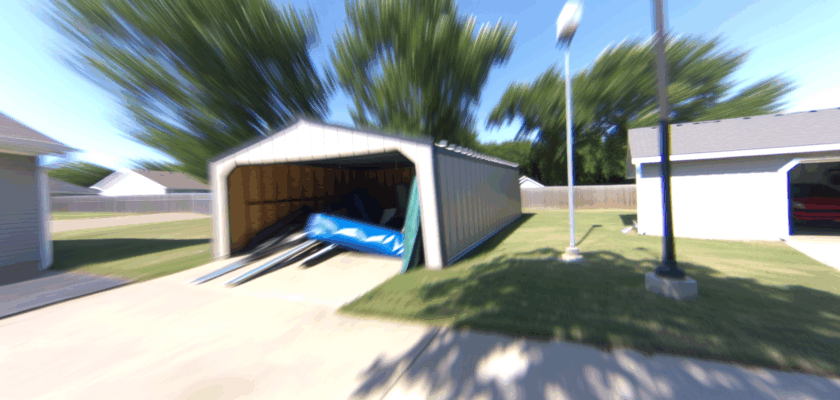Portable garages provide a convenient solution for protecting vehicles and equipment from the elements. However, their lightweight design makes them vulnerable to high winds, which can cause significant damage or even dislodge the structure entirely. Properly anchoring a portable garage is essential to ensure stability and safety during stormy conditions. This article outlines key preparations and a practical step-by-step method to secure your portable garage against strong winds.
Essential Preparations Before Anchoring Your Portable Garage
Before anchoring your portable garage, a thorough assessment of the site and materials is crucial. Begin by selecting an appropriate location that is as sheltered as possible from prevailing winds, avoiding areas prone to flooding or uneven ground. Clear the site of debris, rocks, or vegetation that could interfere with the anchoring process or compromise the stability of the structure.
Next, review the manufacturer’s instructions for your specific portable garage model. Different designs and materials may require varying anchoring systems, and adhering to guidelines ensures both the integrity of the structure and the validity of any warranties. Invest in high-quality anchoring equipment such as heavy-duty stakes, auger anchors, or concrete anchors, depending on the surface and wind exposure.
Finally, consider the local weather patterns and wind speeds in your region. Consulting local building codes or weather advisories can provide insight into the expected severity of storms. This preparation helps determine the level of anchoring needed, alongside any additional reinforcements such as wind straps or weight bags, to provide optimal protection.
Step-by-Step Guide to Secure Your Garage in Strong Winds
Start the anchoring process by assembling all necessary tools and hardware, including a mallet or drill, anchors, and tensioning devices. If your garage is already erected, inspect the frame for any loose connections or damaged parts and tighten or repair them before anchoring. A solid frame is critical to withstand wind forces effectively.
Next, install the anchors at strategic points around the perimeter of the garage. For soft ground, auger-style anchors screwed deeply into the soil offer strong hold, while on concrete or asphalt surfaces, use expansion bolts or concrete anchors. Space the anchors evenly and drive them at a slight angle away from the structure to maximize resistance to uplift forces.
Finally, secure the garage frame to the installed anchors using heavy-duty straps or cables. Tension these firmly to prevent movement but avoid over-tightening, which could stress the frame. Regularly check the tension and condition of the anchors and straps, especially before and after storms, to ensure ongoing stability and safety.
Anchoring a portable garage correctly is vital to protect your investment and maintain safety during high wind events. By performing essential preparations and following a careful step-by-step anchoring procedure, you can significantly reduce the risk of damage or displacement. Staying proactive with regular inspections and adjustments ensures your portable garage remains a reliable shelter throughout the seasons.

